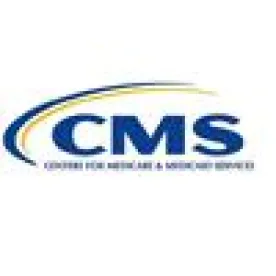On August 29, 2023, the Centers for Medicare & Medicaid Services (CMS) announced the ten (10) Medicare Part D drugs selected for the first round of negotiations of the Medicare Drug Price Negotiation Program (Program)—a few days before the September 1, 2023, statutory deadline imposed by the Inflation Reduction Act (IRA). The negotiated pricing will go into effect in 2026.
In its announcement, CMS included details about upcoming opportunities for public input regarding the Program, including a series of patient-focused listening sessions CMS plans to hold for each selected drug between October and November 2023, and the opportunity for members of the public to submit comments on the selected drugs and their therapeutic alternatives by October 2, 2023.
The following chart outlines the top 10 Part D drugs that will be subject to the first round of CMS’s negotiations, including the total Part D expenditures for each product and the average 2022 out-of-pocket costs for non-low-income subsidy (non-LIS) enrollees.
| Drug Name | Manufacturer Name | Targeted Condition(s) | CMS Listening Session Date | Total Part D Expenditures for June 2022 – May 20231 | Number of Part D Enrollees Who Used the Drug from June 2022- May 2023 |
Average Out-of-Pocket Costs2 |
|---|---|---|---|---|---|---|
| Eliquis | Bristol-Myers Squibb / Pfizer | Prevention and treatment of blood clots | Oct. 30, 2023 | $16,482,621,000 | 3,706,000 | $608 |
| Enbrel | Amgen | Rheumatoid arthritis; Psoriasis; Psoriatic arthritis | Oct. 31, 2023 | $2,791,105,000 | 48,000 | $2,005 |
| Entresto | Novartis | Heart failure | Nov. 1, 2023 | $2,884,887,000 | 587,000 | $569 |
| Farxiga | AstraZeneca | Diabetes; Chronic kidney disease; Heart failure | Nov. 2, 2023 | $3,268,329,000 | 799,000 | $448 |
| Fiasp, Fiasp FlexTouch, Fiasp PenFill, NovoLog, NovoLog FlexPen, NovoLog PenFill | Novo Nordisk | Diabetes | Nov. 3, 2023 | $2,576,586,000 | 777,000 | $261 |
| Imbruvica | AbbVie and Johnson & Johnson |
Blood cancers | Nov. 6, 2023 | $4,087,081,000 | 869,000 | $6,497 |
| Januvia | Merck | Diabetes | Nov. 7, 2023 | $2,663,560,000 | 20,000 | $502 |
| Jardiance | Boehringer Ingelheim / Eli Lilly | Diabetes; Heart failure | Nov. 8, 2023 | $7,057,707,000 | 1,573,000 | $490 |
| Stelara | Johnson & Johnson | Psoriasis; Crohn’s disease; Ulcerative colitis; Psoriatic arthritis | Nov. 14, 2023 | $2,638,929,000 | 22,000 | $4,207 |
| Xarelto | Johnson & Johnson | Blood clots; Coronary or peripheral artery disease | Nov. 15, 2023 | $6,031,393,000 | 1,337,000 | $617 |
2 Data reflects the average out-of-pocket costs for non-LIS enrollees as determined by ASPE using data from Calendar Year 2022. ASPE, Inflation Reduction Act Research Series – Medicare Enrollees’ Use and Out-of-Pocket Expenditures for Drugs Selected for Negotiation Under the Medicare Drug Price Negotiation Program (Aug. 29, 2023).
Key Considerations
CMS has included numerous insulin products aggregated into one qualifying single source drug: One of the more notable drugs included on CMS’s list of the first 10 drugs subject to negotiations is not just a single drug but, rather, an entire class of insulin products and related injectors. These drugs are manufactured by Novo Nordisk and have their own unique Biologics Licensing Application numbers. In CMS’s most recent guidance, the agency confirmed it planned to aggregate expenditures for qualifying single source drugs across all “dosage forms and strengths of the drug, including new formulations of the drug.” Consistent with this guidance, CMS aggregated the Medicare expenditures of both Fiasp and Novolog in their multiple delivery forms: vial, insulin pen, and PenFill.
Stelara’s selection—despite facing biosimilar competition—demonstrates the narrow applicability of the special rule to delay selection of biologic products facing biosimilar competition. The IRA authorizes the Secretary of the U.S. Department of Health & Human Services (HHS) to delay selection of an “extended-monopoly biologic product” facing biosimilar competition if the biosimilar’s manufacturer requests to delay selection of the original biologic product prior to the selected drug list publication date and if the Secretary determines there is a “high likelihood” the biosimilar product would be licensed by September 1, 2025.[1] Under this rule, some industry commenters assumed Stelara—which will likely face biosimilar competition by January 1, 2025—would not be selected for negotiations. In a recent patent litigation settlement, Johnson & Johnson, the manufacturer of Stelara, entered into an agreement with Amgen to launch a biosimilar of Stelara no later than January 1, 2025. Stelara has also entered into another agreement with two other manufacturers to launch another biosimilar to Stelara no later than February 21, 2025. However, rather than focusing on potential biosimilar competition opening up the door for the special rule to apply, the IRA’s narrow time constraints of drugs that can be considered an “extended-monopoly biologic product” actually precluded Stelara from use of the special rule. While Stelara was licensed in 2009 and 2016, under the IRA’s statutory language, only drugs licensed between 2010 and 2014 can be considered “extended-monopoly biologic products” for price applicability year 2026.[2] Therefore, while many viewed CMS’s early selection of Stelara as precluding biosimilar manufacturers from requesting to delay selection of Stelara, stakeholders should consider how the narrow time frame imposed by the statute might apply to biologic products facing biosimilar competition in future years.
Most drugs CMS selected are comparatively lower cost for the Medicare program but are used by a high volume of Medicare beneficiaries: Notably, only three (3) of the ten (10) drugs selected for negotiation cost the agency more than $5,000 per Medicare beneficiary, which highlights that CMS’s method of selecting drugs using gross drug cost has so far targeted relatively low-cost drugs used by a high volume of Medicare beneficiaries—including drugs for diabetes, heart failure, chronic disease, and blood clots. During a recent White House briefing, an official from HHS’s Assistant Secretary for Planning and Evaluation (ASPE) noted that of the approximately 65 million Medicare beneficiaries, twenty-eight percent (28%) have diabetes, twenty-seven percent (27%) have coronary heart disease, fifteen percent (15%) have heart failure, and 1 in 4 have chronic kidney disease. An August 2023 analysis by ASPE indicated enrollee out-of-pocket spending in 2022 for the seven (7) lower cost drugs selected by CMS averaged between $261 to $617 per beneficiary. In comparison, Imbruvica, the highest cost drug on the list, would cost Medicare $133,178 per enrollee between June 2022 and May 2023 and would have cost beneficiaries $5,247 out-of-pocket in 2022.
The ten products CMS selected for negotiation might not actually produce optimal cost savings for the Medicare program: It is questionable whether the drugs selected for negotiation this year will optimize the cost savings CMS could achieve for its first ten (10) negotiated products. CMS has chosen several drugs that may face competition, like Stelara, or that will have significantly reduced list prices before the Maximum Fair Price goes into effect in 2026, such as Fiasp / Novolog, which already are subject to an out-of-pocket cap of $35 per month. In addition, many Medicare beneficiaries may not experience a dramatic impact regarding individual out-of-pocket cost contributions, as only three products on the list (Enbrel, Imbruvica, and Stelara) have average out-of-pocket costs per beneficiary, even for non-LIS enrollees, that exceed the maximum out-of-pocket cap of $2,000 that will apply to Medicare Part D beneficiaries beginning in 2025.
Pending manufacturer litigation may affect many of the selected products and the Medicare Drug Price Negotiation Program overall: Manufacturers of more than half of the products selected for negotiation have individually filed lawsuits or are referenced in the lawsuit brought by the U.S. Chamber of Commerce (e.g., Imbruvica) and the lawsuit filed by the industry association, the Pharmaceutical Research and Manufacturers of America.
Looking Ahead
Patients, manufacturers, and other interested parties should consider whether to submit feedback and share input on the first cycle of drugs selected for negotiations through the multiple feedback opportunities CMS provides stakeholders:
- Speaking at or submitting written input for the upcoming patient focused listening sessions (on the dates referenced above) or through written input submitted, and
- Responding to CMS’ solicitation for public feedback on therapeutic alternatives for selected drugs by October 2, 2023
[1] 42 U.S.C. § 1320f-1.
[2] 42 U.S.C. § 1320f-3.
Nija Chappel, a Law Clerk – Admission Pending (not admitted to the practice of law) in the firm’s Washington, D.C. office, contributed to the preparation of this post.






 />i
/>i

